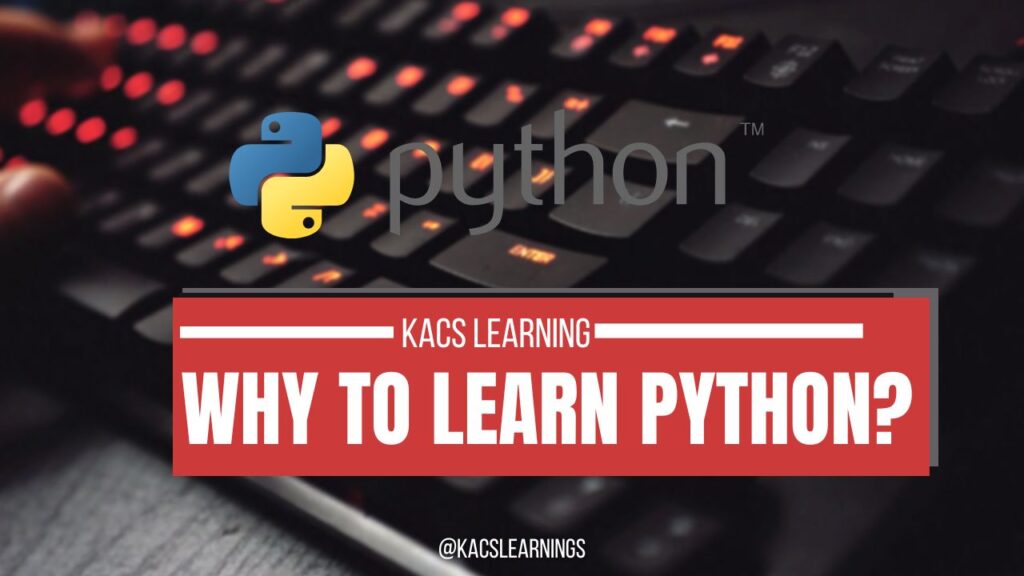
# Reasons to Begin Your Python Learning Journey Today
### Want to simplify your tasks and add some enjoyment to your work? Python is the solution! Not the creature, but the programming language.
Python is a remarkably adaptable and beginner-friendly programming language that is swiftly gaining traction among both experts and novices. Whether your goal is to automate tedious tasks or engage deeply in data analysis, Python opens the door to numerous opportunities. Its straightforwardness and extensive range of applications make it a popular choice for individuals and organizations worldwide.
In this article, we’ll explore why acquiring Python skills is an astute decision—whether you’re just commencing your programming adventure or enhancing your existing skillset.
—
## 1. Python Is Fast and Simple to Understand
When compared to languages such as Java or C++, Python is lauded for its clear, easy-to-read syntax. It demands fewer lines of code and gets right to the essence. For instance, let’s look at how “Hello World” is displayed in two languages:
### Java:
“`java
public class Greeting {
public static void main(String[] args) {
System.out.println(“Hello World!”);
}
}
“`
### Python:
“`python
print(“Hello World!”)
“`
Undoubtedly, the Python example is shorter and more comprehensible. The lack of intricate constructs such as classes and main methods in Python enables you to start coding without delay. Why squander time struggling with convoluted syntax when Python can take care of the heavy lifting?
Due to its ease of use and adaptability, Python is utilized across diverse industries, including web development, data analysis, and artificial intelligence. Let’s examine a few scenarios.
—
## 2. Python Is Versatile and Employed in Various Sectors
Python’s broad range of functionalities makes it an essential resource in numerous fields.
### Web Development
Python empowers developers to swiftly create websites or mobile applications. It’s no shock that numerous prominent companies employ Python for their back-end services. For example, **Netflix**—a leading entity in streaming—attributes its success to Python’s flexibility and simplicity.
> “An increasing number of developers are adopting Python owing to its comprehensive standard library, concise and clear syntax, large developer community, and vast collection of third-party libraries.”
> — Netflix Developers
Other tech leaders, including **Google**, **Instagram**, and **Spotify**, likewise utilize Python to drive their technologies.
Moreover, Python features web frameworks such as **Django** and **Flask**, which facilitate easier web development by equipping developers with pre-built packages for managing functionalities like authentication, contact forms, and data processing.
### Data Analysis
Data is swiftly altering how organizations make decisions, with Python playing a vital role in this shift. Libraries like **NumPy** and **Pandas** streamline data collection, analysis, and visualization. By simplifying data manipulation, Python empowers enterprises to:
– Transform vast datasets into interpretable charts and graphs.
– Extract insights from data, analyze trends, and spur business growth.
As an example, using libraries like **BeautifulSoup** and **Scrapy**, businesses can gather and examine data from platforms like **Twitter**. By assessing tweets and public sentiments, they can refine their marketing approaches, develop more effective campaigns, and enhance their revenue.
Here’s an illustrative Python snippet utilizing **Tweepy** to analyze public opinion from Twitter:
“`python
import tweepy
# Developer Authentication
consumer_key = “your_consumer_key”
consumer_secret = “your_consumer_secret”
access_token = “your_access_token”
access_token_secret = “your_access_token_secret”
# API Object Creation
auth = tweepy.OAuthHandler(consumer_key, consumer_secret)
auth.set_access_token(access_token, access_token_secret)
api = tweepy.API(auth)
# Searching for tweets related to the company “Toptal”
query = “Toptal”
language = “en”
results = api.search(q=query, lang=language)
# Printing results
for tweet in results:
print(tweet.user.screen_name, “tweeted:”, tweet.text)
“`
In just a few minutes, you can gather critical information about your brand’s perception on social media!
### Artificial Intelligence (AI) and Machine Learning (ML)
AI and ML are transforming sectors, with Python being central to these innovations. These areas are data-intensive and significantly depend on Python’s capability to handle large datasets effectively.
AI aims to emulate human cognitive processes using algorithms, while ML allows these systems to improve naturally over time. The simplicity and efficiency of Python make it the preferred language for developing and testing these intricate algorithms. Coupled with extensive libraries like **TensorFlow** and **scikit-learn**, you have a powerful toolkit for AI and ML applications.
Whether your interest lies in voice assistants like Apple’s Siri or predictive analytics in healthcare, Python simplifies the creation of these sophisticated systems.
—
## 3. Promising Career Prospects for Python Developers
The need for Python developers is surging. Firms across various sectors